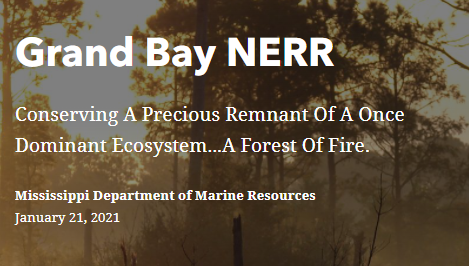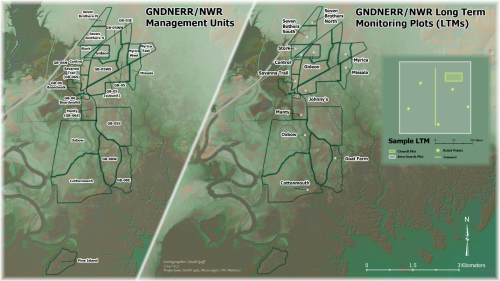Land Management
Types of Land Management Tools
Our land management work currently consists of wildland fire, mechanical clearing, and invasive species management. Prescribed burning is one of our most important tools, but other tools such as mulching, select cutting, and herbicide treatments of invasive species (e.g., Chinese tallow trees) are also important to restore and maintain native pine savanna and flatwoods habitats.
A lack of fire in fire-dependent habitats can lead to poor habitat quality. Also, overgrown shrubs and other vegetation can become fuel for catastrophic wildfires. Invasive species may also encroach and outcompete native vegetation.
Why Manage?
No land management can lead to poor habitat quality. The increased amount of shrubs and other vegetation lead to excess fuel that could be dangerous for wildfires. Invasive species may also encroach on unchecked land and outcompete with native vegetation.

Why Monitor?
We closely track the effects of our land management work on vegetation, birds, and herpetofauna. We currently monitor vegetation and birds at 13 different management units across the Reserve that range from poor to excellent habitat quality. We also monitor reptiles and amphibians in some of these areas. More information on all our upland restoration and monitoring can be found on here on this StoryMap.
Meet the Staff
He monitors the effects of restoration activities.






